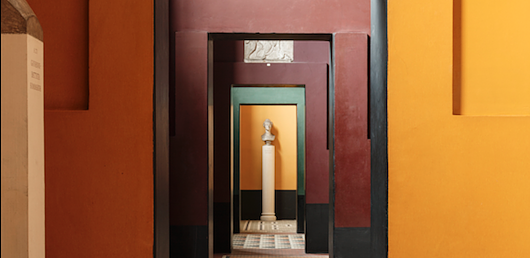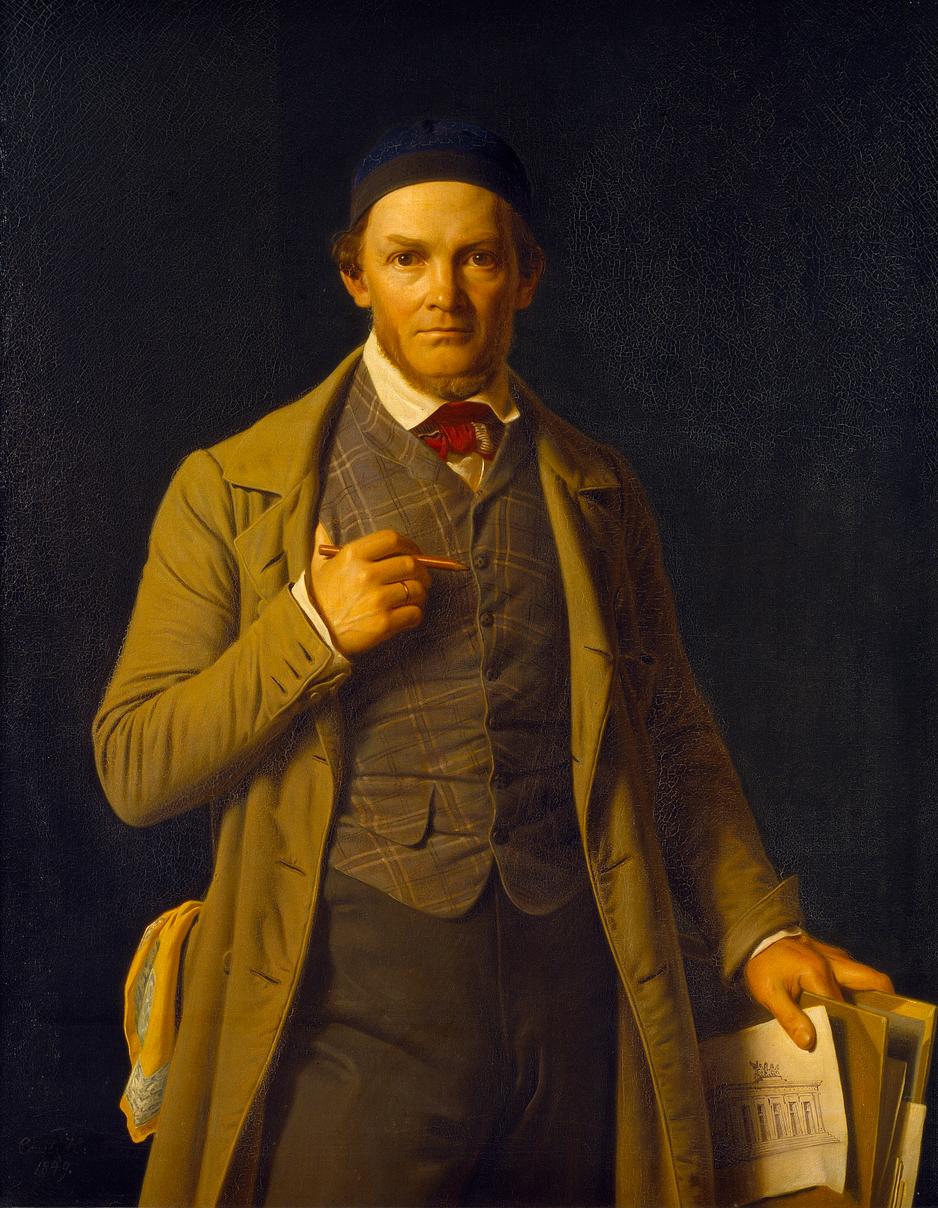
The architecture of the museum
The museum was built specifically to house works by the Danish sculptor Bertel Thorvaldsen (1770-1844). In 1796 Thorvaldsen travelled as a young artist to Rome, where he lived for most of his life, until he returned in 1838 to his native Copenhagen as a world-famous artist. The architect of the museum, Michael Gottlieb Bindesbøll (1800-1856), created a colourful setting for Thorvaldsen’s art, inspired by the patterns and the colours found in the excavations in the ancient cities of Pompeii and Herculaneum in Italy among other places. Bindesbøll had lived in Rome in the 1830s and had become a close friend of Thorvaldsen.

Portræt af Thorvaldsens Museums arkitekt, Michael Gottlieb Bindesbøll. 1849. Olie på lærred
Bindesbøll was in Rome among other reasons to draw up proposals for a future Thorvaldsen Museum in Copenhagen. He often visited Thorvaldsen and was inspired there by the high, diagonal fall of light into the sculptor’s workshops. He took this as his own, and along with the bright colours it became characteristic of the lighting in Thorvaldsens Museum. When the light floods in from the museum’s high, studio-like windows, it creates a variety of moods for the sculptures and the many colours of the architecture, depending on the time of day or the season when you visit the museum. This makes each visit to the museum something special.